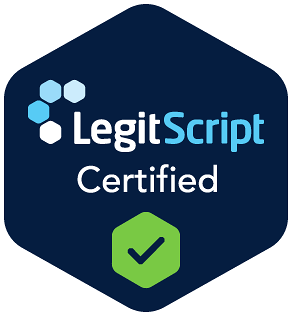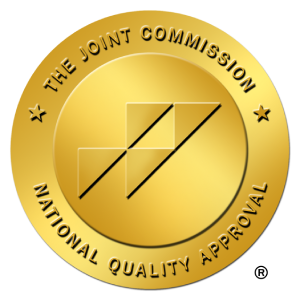You’ll find breakthrough treatments for dopamine addiction combining three key approaches: neuromodulation technology like FDA-approved TMS, GLP-1 medications showing 40% reduction in cravings, and AI-enhanced behavioral interventions. Clinical studies demonstrate up to 40% higher recovery rates when these methods work together versus traditional treatments alone. The most effective protocols integrate medical interventions with holistic care, digital therapeutics, and structured lifestyle modifications. Exploring these evidence-based solutions can transform your path to recovery.
Breakthrough Neuromodulation Methods for Rewiring Dopamine Pathways

Neuromodulation represents a pivotal advancement in treating dopamine-related addictions, offering precise methods to rewire neural pathways involved in reward and craving behaviors. Through personalized neurostimulation protocols, treatments like FDA-approved TMS target the prefrontal cortex to modulate impulse control, while tDCS delivers weak electrical currents to boost neural plasticity. Recent studies show that GLP-1 medications can enhance neuromodulation outcomes.
Clinical research indicates that chronic substance use fundamentally alters brain structure and function, making neuromodulation approaches particularly valuable for addressing these neurological changes. Veterans diagnosed with PTSD have triple the risk of developing tobacco use disorders, highlighting the critical need for targeted neuromodulation interventions.
Real-world efficacy data shows promising results, particularly when combining these approaches with cognitive behavioral therapy.
More invasive options like DBS demonstrate success in severe cases by directly modulating the nucleus accumbens, while emerging technologies such as LIFU offer non-invasive deep brain targeting. Peripheral techniques, including auricular and vagal nerve stimulation, provide additional treatment avenues.
These evidence-based interventions are transforming addiction treatment by offering targeted approaches that can be customized to individual patient needs and response patterns.
GLP-1 Medications: A Game-Changing Approach to Craving Control

While neuromodulation techniques target neural circuits directly, GLP-1 receptor agonists represent a groundbreaking pharmacological intervention for addiction treatment. These medications exhibit multifactorial therapeutic effects by modulating dopamine release and regulating reward pathways linked to substance use disorders. Preclinical studies show that dopamine signaling alterations significantly reduce drug-seeking behaviors. Early research indicates that food addiction recovery is possible with proper nutrition and exercise after discontinuing the medication. Early case reports demonstrate that patients receiving Semaglutide treatment experienced notable reductions in alcohol cravings.
You’ll find compelling evidence in their clinical impact: a 40% reduction in opioid cravings, 50% decrease in alcohol intoxication events, and significant improvements in tobacco dependency. The medications’ pharmacokinetic optimization continues to evolve as researchers refine dosing protocols for maximum effectiveness.
While GLP-1 medications show promise, you’ll need to examine individual response variability and potential side effects. Monitoring for gastrointestinal issues and understanding the rare risks of pancreatitis is essential. Their application extends beyond substance use, showing potential for behavioral addictions and stress-related relapses.
Science-Backed Behavioral Interventions for Lasting Recovery

Beyond pharmacological treatments, science-backed behavioral interventions form a critical foundation for sustainable addiction recovery. Cognitive Behavioral Therapy (CBT) and Dialectical Behavior Therapy (DBT) provide essential habit disruption strategies by addressing harmful thought patterns and enhancing emotional regulation. You’ll learn impulse control techniques through mindfulness practices and trigger identification, while behavioral activation plans systematically replace compulsive behaviors with adaptive alternatives. The comprehensive approach helps restore natural dopamine production through therapeutic interventions. Understanding the brain’s reward system helps patients recognize how their behaviors reinforce addiction patterns.
Digital interventions complement traditional approaches by implementing structured detox protocols and monitoring tools. Research shows that an average of 3 hours daily is spent mindlessly scrolling through social media feeds, making digital monitoring crucial for recovery. You can utilize app-based tracking systems to identify dopamine triggers and establish healthier routines. Support networks, including group therapy and peer mentorship, reinforce these behavioral changes through shared accountability. Combined with activity-based interventions like exercise and skill-building, these evidence-based strategies create an encompassing framework for lasting recovery.
Integrated Treatment Solutions: Combining Medical and Holistic Care
Modern addiction treatment recognizes that ideal recovery outcomes emerge from combining medical interventions with holistic healing approaches. When you integrate medication-assisted treatment with mindful lifestyle practices, you’ll experience more complete healing. This dual approach targets both neurochemical imbalances and behavioral patterns while fostering sustainable recovery through community based peer support.
Pharmaceutical interventions like Wellbutrin® work alongside structured exercise routines to optimize dopamine regulation. CBT and mindfulness meditation complement medication protocols by addressing psychological dependence. Developing healthy sleep habits helps stabilize disrupted dopamine pathways naturally. Since dopamine release surges from drug use are significantly more intense than natural rewards, treatment must focus on restoring normal pleasure responses. Leading healthcare professionals emphasize a whole-person approach to addiction recovery at major medical conferences. Nutritional therapy augments medication effectiveness while supporting natural neurotransmitter production. Group therapy combined with MAT creates a sturdy support system that addresses both physical and emotional healing.
This integrated strategy guarantees you’re treating addiction at multiple levels, maximizing your chances of long-term recovery success.
Digital Therapeutics and AI-Enhanced Recovery Support
Digital therapeutics (DTx) and AI-powered recovery platforms represent a transformative advancement in dopamine addiction treatment. Through adaptive content personalization, these platforms deliver precisely calibrated interventions that evolve with your recovery journey. The platforms help counter the reward system hijacking that makes digital addiction so powerful.
AI algorithms analyze your engagement patterns and adjust therapeutic content in real-time, preventing habituation while maintaining ideal challenge levels. Given the etiological heterogeneity in addiction patterns, personalized therapeutic strategies are essential for effective treatment outcomes. Early and frequent FDA engagement helps ensure these AI-driven solutions meet rigorous clinical evidence standards.
Real-time user monitoring via mobile apps and wearables tracks your behavioral patterns and physiological markers, enabling immediate intervention when signs of compulsive use emerge. You’ll receive individualized alerts, guided CBT exercises, and mindfulness sessions specifically suited to your triggers and progress.
Evidence-based gamification elements reinforce healthy habits, while built-in social support networks combat isolation. Quality-assured DTx platforms, operating under strict regulatory frameworks, seamlessly integrate with your broader treatment plan, ensuring comprehensive, data-driven recovery support.
Frequently Asked Questions
How Long Does It Take for Dopamine Levels to Return to Normal?
Your dopamine levels typically follow a specific withdrawal timeline, taking 12-14 months to return to near-normal levels.
During the initial two weeks, you’ll experience acute withdrawal, followed by gradual improvement over 1-3 months. Natural recovery strategies become more effective after 90 days.
While complete restoration varies by individual, you’ll notice significant improvement in dopamine function between months 3-12, with ideal recovery occurring after one year of sustained abstinence.
Can Genetic Testing Predict Which Treatment Approach Will Work Best?
Yes, genetic testing can help predict your treatment success through personalized treatment plans. Modern genetic predisposition screening, like GARS™, analyzes over 28 dopamine pathway variants to determine which medications and interventions you’ll likely respond to best.
Your unique genetic profile can indicate whether you’ll benefit more from specific medications like naltrexone or buprenorphine. While not definitive, this testing considerably improves treatment matching and outcomes.
What Percentage of Insurance Companies Cover These New Treatment Options?
You’ll find that provider coverage models for new addiction treatments differ markedly. Currently, approximately 70-80% of major insurance carriers include basic substance abuse treatments under ACA guidelines.
However, reimbursement policies for newer options are more restricted. You can expect extensive coverage from about 30-40% of insurers for emerging therapies, while others may offer partial coverage or require additional documentation. Traditional evidence-based treatments maintain the highest coverage rates.
Are There Specific Dietary Changes That Can Help Restore Dopamine Balance?
You can restore dopamine balance through strategic dietary modifications.
Focus on increased protein intake from sources rich in tyrosine, the precursor to dopamine. Implement targeted nutrient supplementation with omega-3 fatty acids, B-vitamins, and magnesium.
Adopt a ketogenic or low-carb approach to stabilize blood sugar and reduce ultra-processed food cravings. Combine these changes with nutrient-dense whole foods to support sustained neurotransmitter regulation and minimize addiction-like eating behaviors.
How Do Hormonal Changes Affect Dopamine Addiction Treatment Success Rates?
Your hormonal fluctuations substantially impact your addiction treatment outcomes. When your stress hormones like cortisol are raised, you’ll experience stronger cravings and reduced treatment effectiveness.
Concurrently, if you’re female, estrogen variations can increase your reward sensitivity, potentially affecting addiction severity. You’ll need personalized treatment plans that account for your unique hormonal profile, as imbalances in oxytocin and vasopressin can influence your social bonding and recovery support mechanisms.






